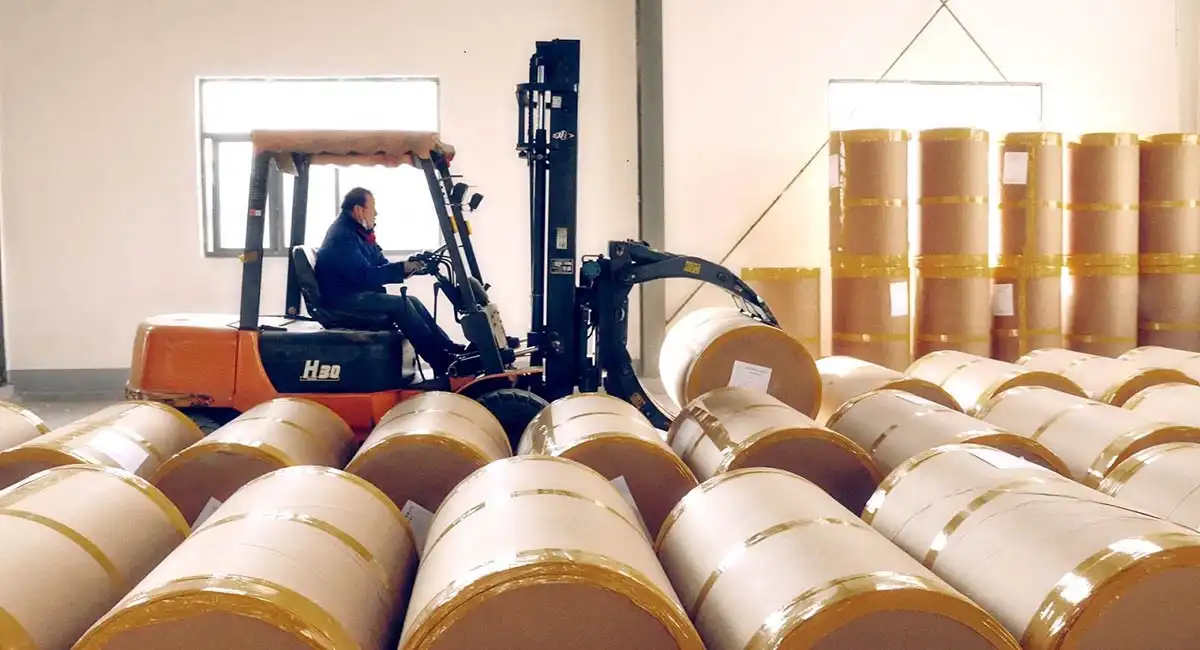Decorative base paper, a cornerstone in creative design and manufacturing industries, demands meticulous care and storage. This guide provides an in-depth look into maintaining the integrity and beauty of this essential material, from decorative printing paper to textured raw base paper.
Optimal Temperature and Humidity Conditions
The Importance of Climate Control
The longevity of decorative base paper heavily depends on the environment it’s stored in. Ideal storage involves managing both temperature and humidity. Keeping the environment at a stable temperature and around 50% humidity is crucial to prevent the decorative paper from becoming brittle or misshapen. This is particularly vital for specialty papers, like embossed decorative paper or high-grade raw base paper used in luxury packaging.
Advanced Climate Management Tools
Utilizing tools such as digital hygrometers and climate control systems can help in maintaining these conditions. For facilities storing large quantities of decorative craft paper or commercial decorative printing paper, investing in sophisticated climate control systems is essential.
Protecting from Light and UV Damage
The Detrimental Effects of Sunlight
Sunlight can severely affect the quality of decorative base paper. UV rays can fade the vibrant colors of dyed or printed decorative paper, diminishing its aesthetic appeal and suitability for high-end applications.
Innovative Storage Solutions
To combat this, storing paper in dark, UV-protected areas is advised. For spaces with natural light, UV-filtering window films and protective paper wrappings can offer additional defense, especially for sensitive materials like photo-reactive decorative paper.
Storage Methodologies: Flat vs. Rolled
Preserving Paper Integrity
The choice between flat and rolled storage can impact the usability of the paper. Flat storage is preferred for delicate or heavily textured papers, such as embossed decorative paper or heavyweight luxury base paper.
Best Practices for Rolled Storage
For large-scale storage, especially in industrial settings where bulk rolls of decorative base paper are common, ensuring rolls are loosely wound and adequately supported is key. This prevents the inner layers from being crushed, maintaining the paper’s quality for future decorative printing or crafting purposes.
Ventilation: A Key to Paper Preservation
Ventilation’s Role in Preventing Moisture Damage
Proper ventilation is crucial to avoid moisture-related issues, especially in regions with high humidity. This is important for papers like fine art decorative paper or archival-quality base paper, where even minor moisture exposure can cause significant damage.
Creating a Ventilated Storage Environment
Using air circulators and maintaining a clean, uncluttered storage space can greatly enhance air flow, protecting the paper from moisture-related issues.
Maintaining a Dust-Free Storage Area
The Impact of Dust Accumulation
Dust can degrade the surface quality of decorative base paper, posing challenges in subsequent printing or application processes. This is particularly problematic for papers with a high tactile quality, like linen-textured decorative paper or fine-grain raw base paper.
Effective Dust Management Strategies
Regular cleaning schedules and using dust-resistant storage solutions, such as sealed containers or cabinets with filters, are vital. For environments handling delicate papers like archival decorative paper, maintaining a dust-free environment is imperative.
Robust Pest Control Measures
Identifying and Combating Paper Pests
Pests like silverfish and rodents can be detrimental to paper stocks. They are particularly attracted to organic materials like traditional wood pulp decorative paper.
Implementing Effective Pest Control
Regular inspections, clean storage conditions, and pest-proof storage solutions are essential in safeguarding your decorative paper stock, especially in warehouse settings where large quantities of raw base paper are stored.
Chemical Exposure: What to Avoid
The Risk of Chemical Damage
Chemicals and fumes can alter the color, texture, and structural integrity of decorative base paper. This is a significant concern for papers used in sensitive applications, like acid-free decorative paper or photographic base paper.
Safe Storage Practices
Ensuring that your storage space is isolated from potential chemical contaminants is crucial. Using dedicated, ventilated cabinets for storing sensitive materials like chemical-free decorative paper can provide additional protection.
Efficient Organization and Accessibility
Streamlining Paper Storage
An organized storage system not only facilitates easy access to different types of decorative base paper but also minimizes handling, reducing the risk of damage.
Implementing a Robust Labeling System
Clear, descriptive labels assist in quick identification, which is crucial in environments with a diverse range of paper types, from standard decorative craft paper to specialized metallic base paper.
Designing an Effective Storage Layout
A well-planned physical layout, considering the size and frequency of use of various paper types, from bulk raw base paper to individual sheets of designer decorative paper, enhances storage efficiency and accessibility.
Proper storage is a critical component in maintaining the quality and lifespan of decorative base paper. By implementing these guidelines, businesses and hobbyists alike can ensure their materials, from everyday decorative printing paper to specialized raw base paper, remain in pristine condition, ready for creative endeavors.

